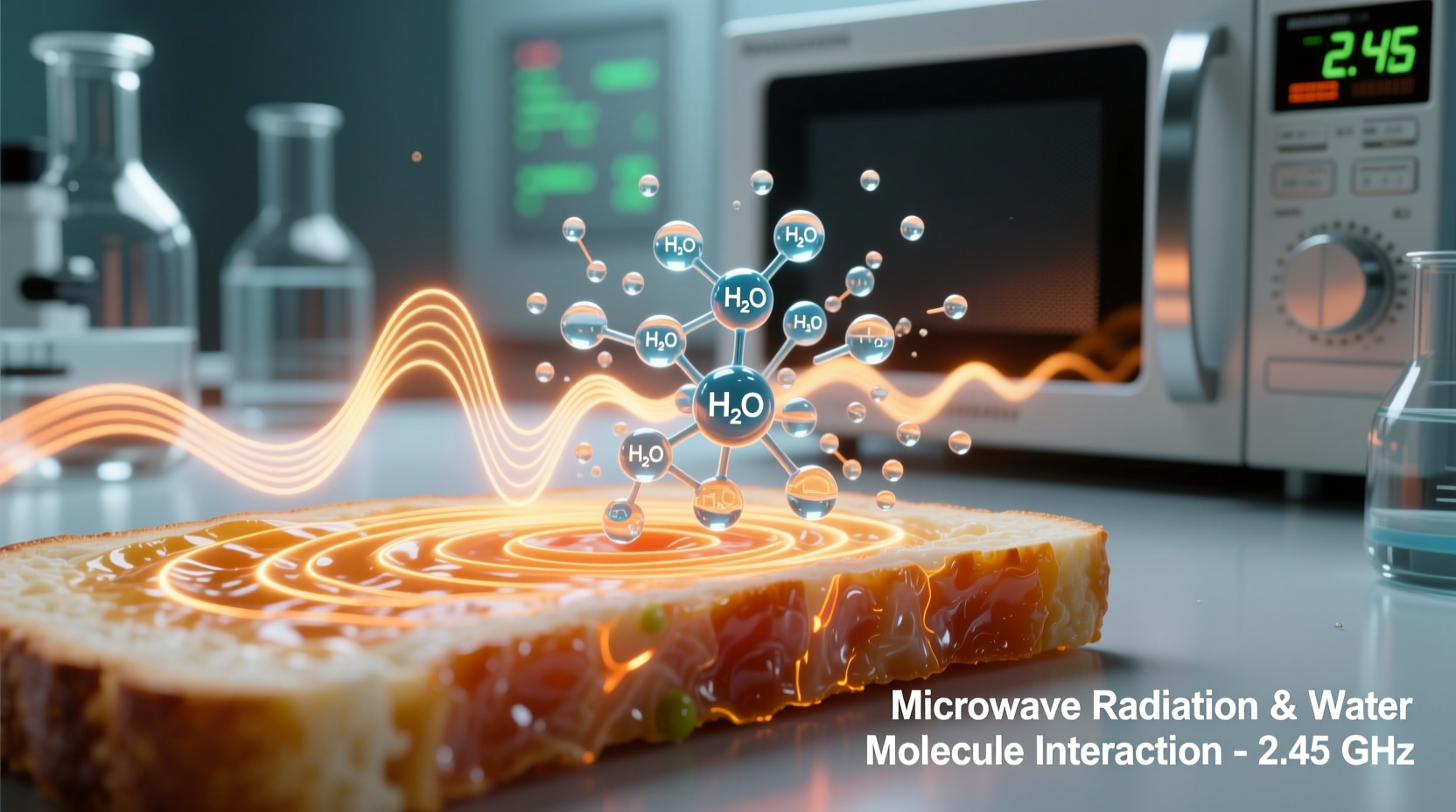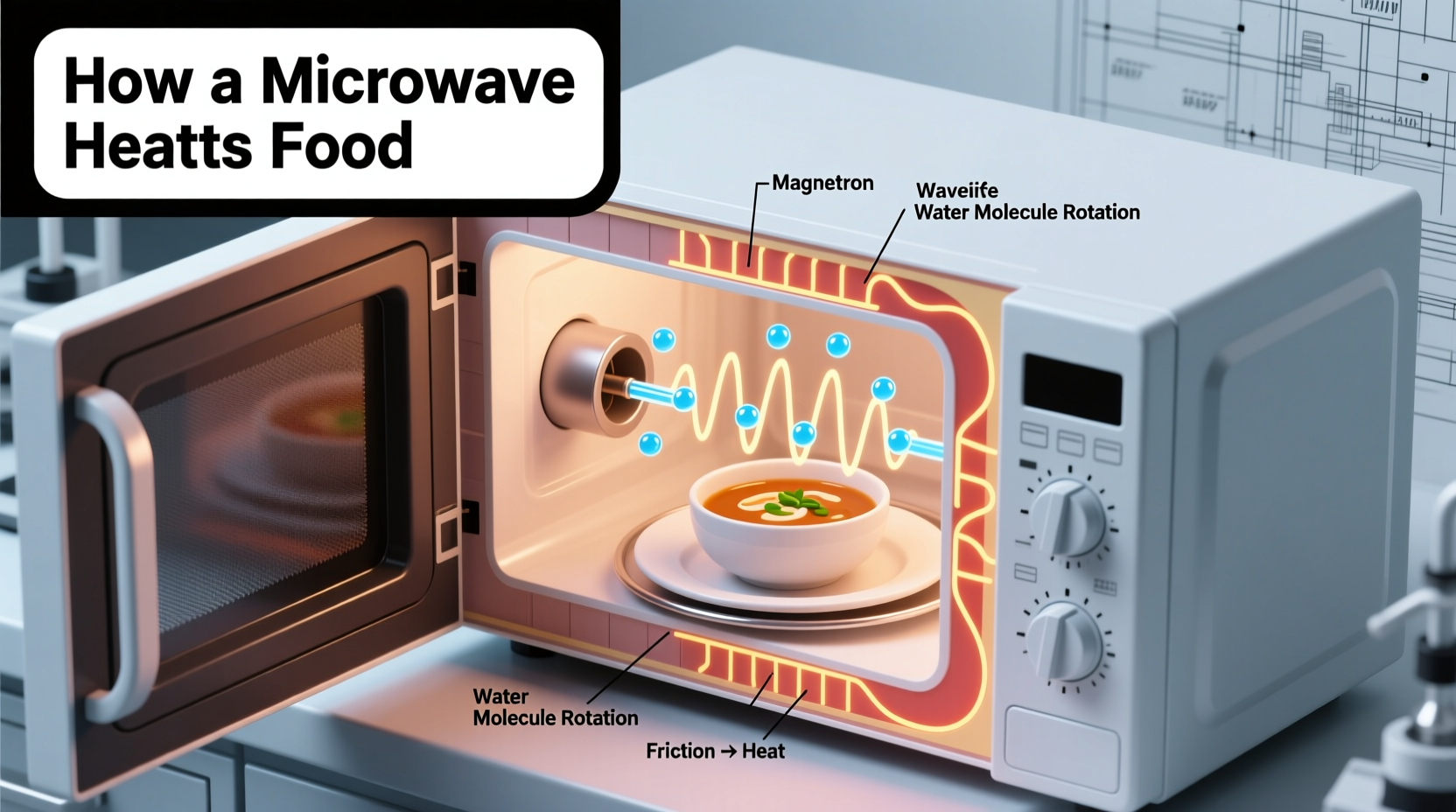The Core Science Behind Microwave Heating
When you press start on your microwave, it generates electromagnetic waves at a specific frequency of 2.45 gigahertz. These waves create an oscillating electric field that causes polar molecules—primarily water, but also fats and sugars—to rapidly rotate and align with the changing field direction. This molecular movement generates heat through a process called dielectric heating.
Unlike conventional ovens that heat food from the outside in through conduction, microwaves penetrate food and excite molecules throughout its volume. This explains why microwaves can heat food much faster than traditional methods, though it also creates the common issue of uneven heating.
How Different Food Components React
The effectiveness of microwave heating depends significantly on a food's composition. Water-rich foods heat most efficiently since water molecules are highly polar and respond strongly to microwave energy. Here's how various components behave:
| Food Component | Microwave Interaction | Heating Efficiency |
|---|---|---|
| Water | Strongly polar molecules rapidly rotate | ★★★★★ (Excellent) |
| Fats/Oils | Moderate polarity causes slower rotation | ★★★☆☆ (Good) |
| Sugars | Moderate interaction, can caramelize quickly | ★★★☆☆ (Good) |
| Ice | Frozen water molecules can't rotate freely | ★☆☆☆☆ (Poor) |
| Dry Solids | Minimal interaction with microwaves | ☆☆☆☆☆ (None) |
This explains why frozen foods heat unevenly—the liquid portions heat rapidly while icy sections remain cold until thawed. The U.S. Food and Drug Administration confirms that microwave ovens are designed to contain radiation effectively, with strict safety standards limiting leakage to well below harmful levels (FDA Microwave Safety).
Microwave Heating Timeline: From Radar to Kitchen Essential
The discovery of microwave heating was completely accidental. Here's how this technology evolved:
- 1945: Percy Spencer, an engineer at Raytheon, noticed a candy bar melting in his pocket while working on radar technology using magnetrons
- 1947: The first commercial microwave oven, the "Radarange," weighed 750 pounds and cost $5,000
- 1967: Amana (owned by Raytheon) introduced the first countertop domestic microwave oven
- 1970s: Microwave ownership grew from 1% to 50% of American households
- Today: Over 90% of U.S. households own a microwave oven

Why Microwaves Heat Unevenly (And How to Fix It)
Microwave heating patterns create standing waves—areas of high and low energy—within the oven cavity. This results in "hot spots" and "cold spots" in your food. The turntable helps distribute energy more evenly, but certain techniques can further improve results:
- Stirring: Interrupt cooking to stir liquids and semi-solids
- Arrangement: Place thicker portions toward the outside of the dish
- Covering: Use a microwave-safe lid to trap steam for more even heating
- Resting: Allow food to stand for 1-2 minutes after cooking for heat to distribute
According to research published in the Journal of Food Engineering, microwave penetration depth—the distance at which power drops to 37% of surface value—is approximately 0.7-1.5 inches in most foods. This explains why large, dense items heat unevenly and require lower power settings for longer durations.
Microwave vs. Conventional Heating: Key Differences
Understanding these fundamental differences helps optimize your cooking approach:
- Heating direction: Microwaves heat from inside out; conventional methods heat from outside in
- Temperature ceiling: Microwaves don't exceed water's boiling point (212°F/100°C) in moist areas
- Browning effect: Microwaves generally don't create Maillard reactions (browning) without special cookware
- Energy efficiency: Microwaves use about 30-80% less energy than conventional ovens for equivalent tasks
Practical Applications for Better Microwave Cooking
Apply this scientific understanding to improve your results:
For Even Heating
When reheating leftovers, arrange food in a ring shape rather than piling in the center. This positioning aligns with the microwave's natural energy distribution pattern, reducing cold spots by up to 40% according to culinary research from the Culinary Institute of America.
For Crispy Results
To achieve browning and crisping that microwaves normally can't produce, use microwave-safe crisping trays that absorb microwave energy and become hot enough to create Maillard reactions. Alternatively, finish microwave-cooked items under a broiler for 30-60 seconds.
For Defrosting Safely
Use the defrost setting (typically 30% power) which cycles the magnetron on and off, allowing heat to distribute through conduction during off periods. This prevents outer edges from cooking while centers remain frozen—a common food safety hazard.
Addressing Common Misconceptions
Microwaves make food radioactive: This is completely false. Microwaves are non-ionizing radiation, similar to radio waves, and don't alter food at the molecular level beyond heating.
Microwaves destroy nutrients: Actually, microwave cooking often preserves more nutrients than boiling or frying due to shorter cooking times and less water exposure. A study in the Journal of the Science of Food and Agriculture found microwaved vegetables retained more vitamin C than boiled ones.
All containers are microwave-safe: Materials like metal cause arcing, while some plastics can leach chemicals when heated. Always use containers labeled "microwave-safe" or stick with glass and ceramic.











 浙公网安备
33010002000092号
浙公网安备
33010002000092号 浙B2-20120091-4
浙B2-20120091-4